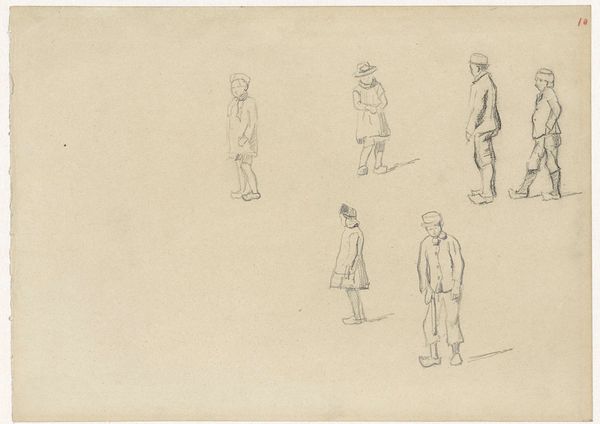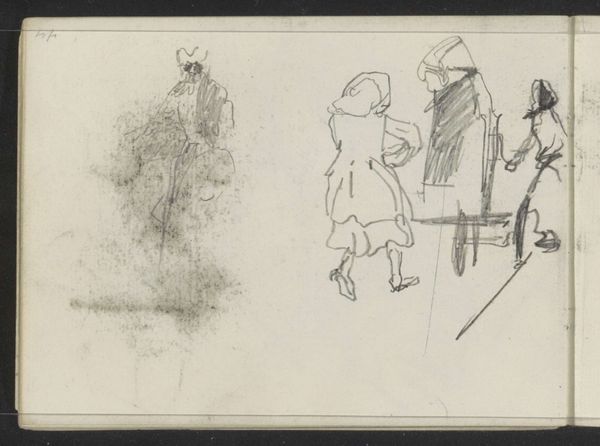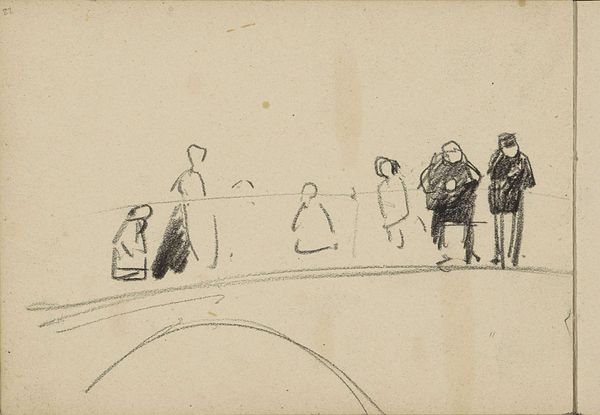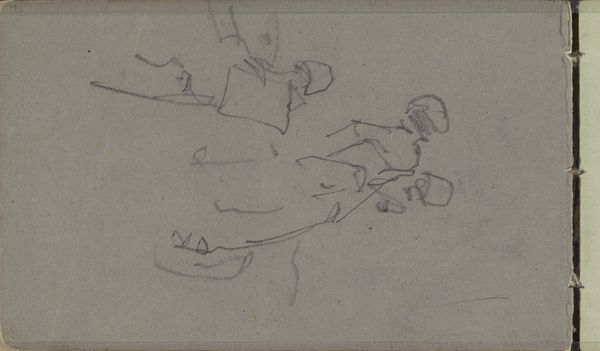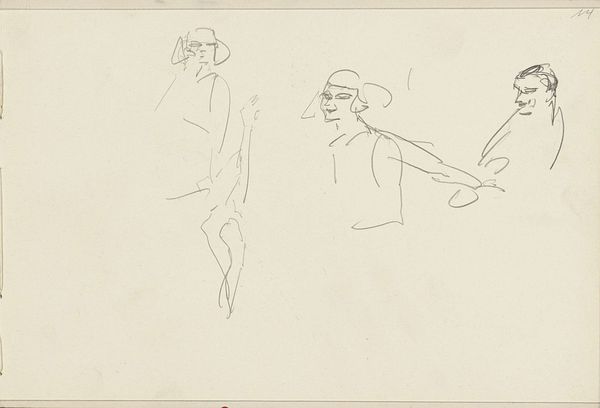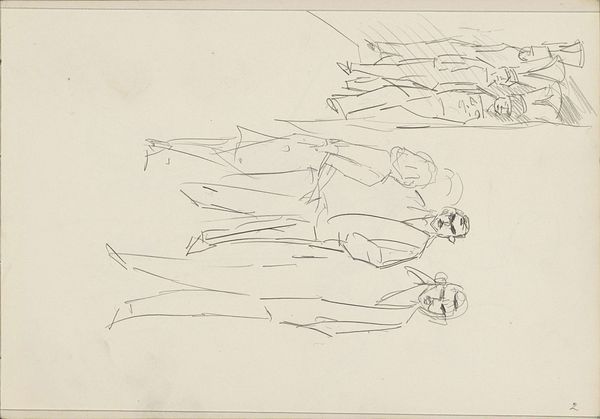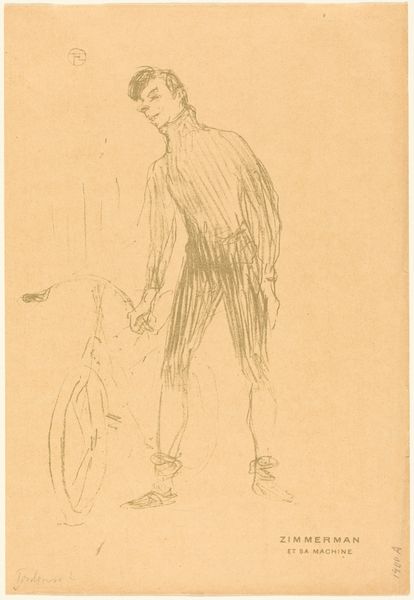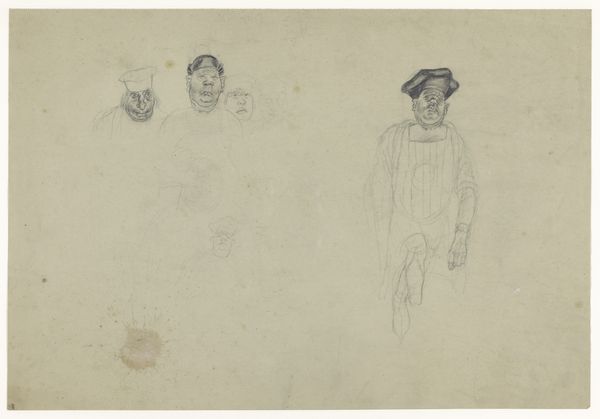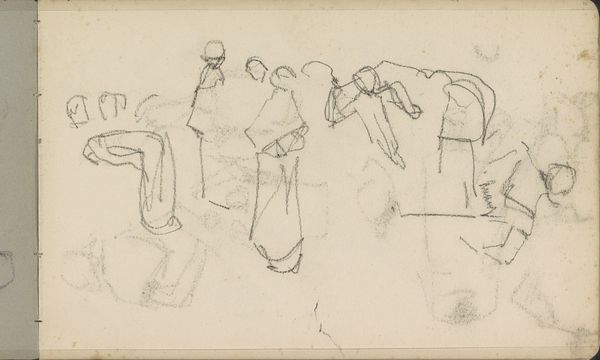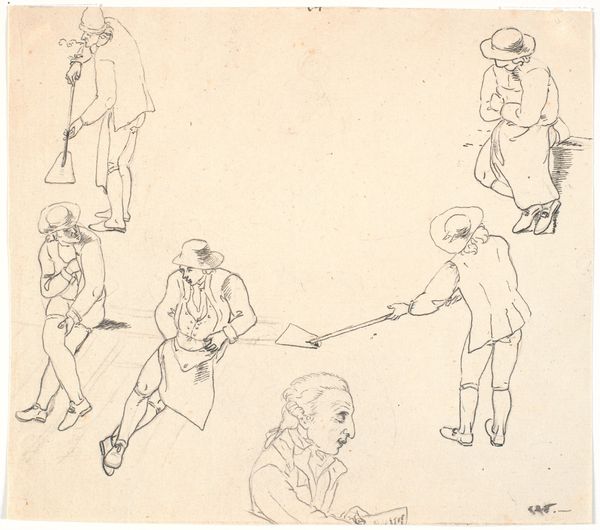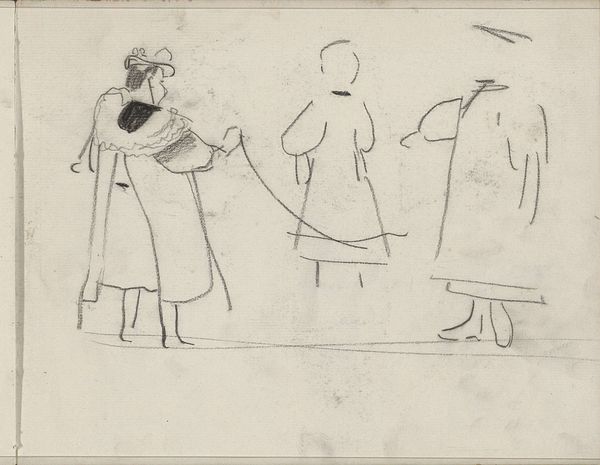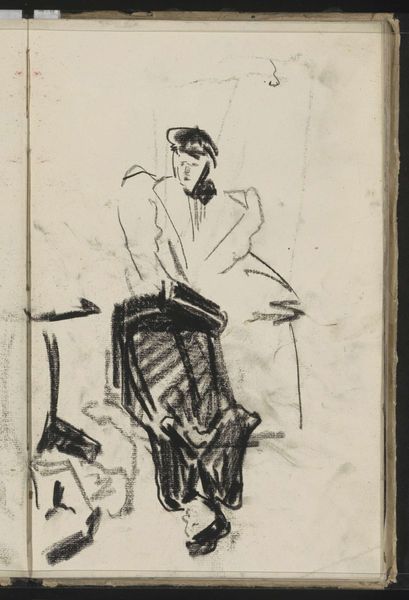
Dimensions: height 122 mm, width 167 mm
Copyright: Rijks Museum: Open Domain
Editor: So, this is Gerrit Willem Dijsselhof's "Three Skating Men," likely created between 1904 and 1906 using ink and pencil. The scene has this light, almost humorous touch…What do you make of this unassuming sketch? Curator: It’s interesting how Dijsselhof captures a leisure scene, but it's also worth considering the socio-political implications of representing leisure, isn’t it? Who has access to this kind of recreation? The exaggerated curl of the skates seems almost satirical. Do you think there's an element of class critique at play? Editor: A critique? I mostly saw it as a playful genre scene… But now that you mention it, their attire *is* quite distinctive, those upward-curling skates seem to represent a certain social class enjoying themselves… Curator: Exactly! Dijsselhof lived in a time of considerable social upheaval, a time of rising socialist movements. To portray these figures in this almost cartoonish way, might subtly question their privileged position. Their whimsical footwear could signify detachment from everyday concerns. Editor: So you are suggesting he’s using humor as a way to make a statement about social inequalities present in Dutch society at the time. Is that reading too much into it? Curator: Not at all! By analyzing visual culture within historical and theoretical contexts, we gain a fuller understanding of the artwork's purpose. It’s less about what Dijsselhof *intended*, and more about the potential the artwork possesses within its own time and ours. Editor: That’s a great point. I learned a lot from examining an ordinary genre sketch, placing it within its social environment. Curator: Likewise, viewing art with consideration of its social, cultural, and economic backdrop is the key. Thank you!
Comments
No comments
Be the first to comment and join the conversation on the ultimate creative platform.
